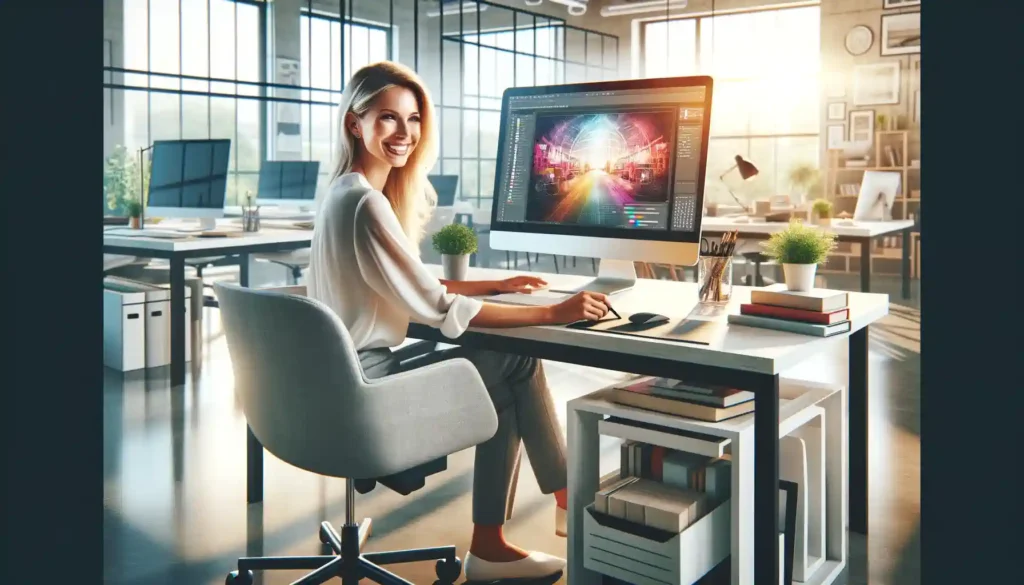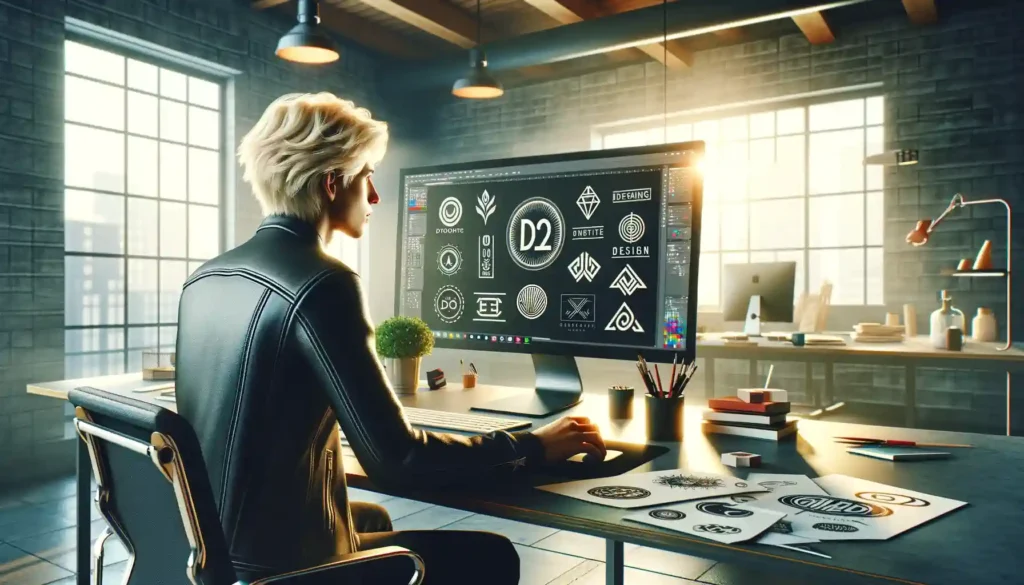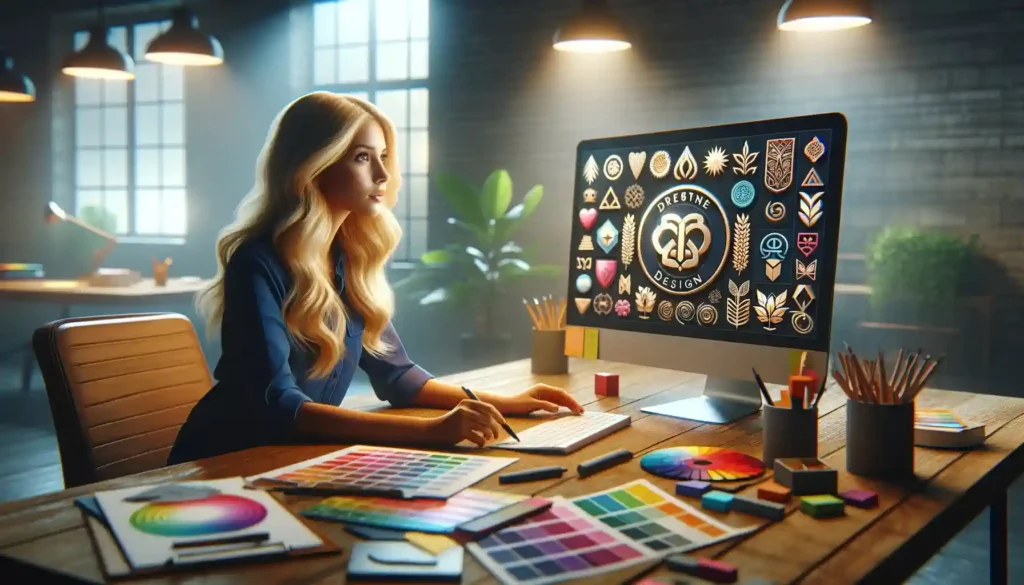Motion Logo Design – When Your Brand Decides to Bust a Move. Hey everyone, let’s talk logos! Specifically, motion logo design—the part where your brand’s logo stops being shy and starts busting moves like it’s in a dance-off!

The Do’s of Motion Logo Design
1. The Birth of the Motion Logo
Remember when logos just sat there, chilling? You’d slap ‘em on your website, put ‘em on a business card, and call it a day. Those were simpler times. But then—bam! Motion logos came in, said, “Why just sit there when I can twirl, spin, and sparkle?”
2. Why Motion? Why Now?
Here’s the thing: attention spans are shorter than ever. I mean, we’re talking goldfish levels of focus here. Your logo sitting still? That’s so 2005. But throw some smooth animation on it, and suddenly, your brand is turning heads. It’s like you’re walking into a room with a spotlight on you, and everyone’s going, “Whoa, who’s that?!” That’s the power of motion logos—it grabs attention like an all-you-can-eat dessert bar.
3. The Magic of the Reveal
Now, here’s my favorite part: the big reveal. When that logo starts with a subtle little fade-in, then builds up to an epic animation climax, it’s like the Avengers assembling in logo form. It’s the type of thing that makes your customers feel like they’ve just witnessed a magic trick. And guess what? They want more. The best motion logos tease the audience, drop the logo like a mic, and leave them craving whatever you’re selling.
4. But Hold On, Don’t Overdo It!
Of course, there’s a line between “elegant motion” and “my logo is throwing a rave.” You don’t want your logo looking like it’s been binge-watching dance tutorials. Nope, a good motion logo is smooth, subtle, and classy—think more James Bond, less disco fever. The idea is to add just the right amount of movement to make your logo pop without making viewers dizzy.
5. The Tech Behind the Twirl
Let’s get a little nerdy for a second. Behind every swoosh, spin, and sparkle is a ton of tech wizardry. We’re talking After Effects, Blender, Cinema 4D—basically, the entire Avengers lineup of motion design software. It’s not just about making your logo move; it’s about making it move with style, grace, and a little bit of swagger. Trust me, when you see that final render, it feels like you’ve just scored the winning touchdown at the Super Bowl.
6. Why Your Brand Deserves a Motion Logo
Simple: it’s all about brand memorability. People are more likely to remember something that moves—just like they’re more likely to remember a cool dance move than a person standing still. A well-crafted motion logo sticks in people’s brains like a catchy tune, reminding them of your brand whenever they see it glide onto their screen.
7. Motion Logos Across Platforms
Oh, and did I mention how versatile these bad boys are? Whether you’re on social media, your website, or even in your email signature, a motion logo is like that friend who’s great at every party. It works everywhere! Instagram post? Motion logo. YouTube intro? Motion logo. The opening scene of your TED Talk? You guessed it—motion logo. It’s the universal showstopper your brand’s been waiting for.
8. The Final Flourish
In the end, a motion logo is more than just a fancy animation—it’s a statement. It says, “Hey world, look at me! I’m not just another logo; I’ve got moves!
So, the next time you think about your logo, don’t just think about it sitting there—think about what it could be. Add a little motion, and suddenly, you’ve got yourself a brand that doesn’t just exist—it dances.
9. Do Embrace Simplicity
The most iconic logos are often the simplest. Simplicity ensures your logo is versatile, scalable, and easily recognizable. A simple design facilitates quick identification and allows for more flexible usage across various mediums.
10. Do Consider the Brand’s Story
A logo should be more than just an attractive visual; it should reflect the brand’s values, mission, and personality. Take the time to understand the brand’s core principles and craft a logo that tells its story.
11. Do Choose Colors Wisely
The interplay of colors and hues in branding is crucial, as each shade can stir distinct feelings and connotations, significantly influencing logo creation. Select colors that align with the brand’s personality and the message it wishes to convey. However, also ensure the logo works well in monochrome for situations where color printing is not feasible.
12. Do Test Your Logo
Before finalizing your logo, test it with various audiences to gather feedback. This can help identify any potential misunderstandings or unintended associations and ensure the logo resonates well with the target demographic.
13. Do Prioritize Readability
Readability is paramount in logo design. A logo must be legible across various platforms, from the tiny display on a smartphone to the large signage on a billboard. This entails a careful selection of font types, sizes, and spacing. Avoid overly decorative fonts that might compromise clarity, especially in small sizes. Additionally, consider the logo’s scalability. A design that’s readable on a desktop screen might lose clarity on a business card. Conducting tests across different mediums can ensure your logo remains effective and legible in any context.
14. Do Keep It Original
Originality sets a brand apart in a saturated market. An original logo reflects a brand’s unique identity and values, creating a distinct presence that can be easily identified by consumers. To achieve originality, avoid clichés and overused symbols within your industry. Instead, focus on innovative designs that reflect the brand’s personality and ethos. This might involve a creative reinterpretation of familiar symbols or the development of a completely new iconography. Original logos not only capture attention but also foster a strong brand recall.
15. Research Your Audience
A deep understanding of your target audience is crucial for creating a logo that truly resonates. This involves more than just demographic information; it requires insights into their preferences, lifestyles, and behaviors. What appeals to a tech-savvy younger audience may differ significantly from what resonates with more traditional consumers. Use market research, social media analytics, and customer feedback to gather data on your audience. This research can guide design choices, from color and form to typography and imagery, ensuring the logo appeals directly to those you aim to reach.
Incorporating these strategies into the logo design process can significantly enhance the effectiveness, appeal, and longevity of a brand’s visual identity. By prioritizing readability, ensuring originality, testing designs, researching the audience, and creatively using negative space, designers and brands can develop logos that not only stand out in the marketplace but also forge deeper connections with their target audience.

The Don’ts of Motion Logo Design
1. Don’t Overcomplicate
Avoid cluttering your logo with too many elements, colors, or fonts. An overcomplicated logo can be confusing, making it difficult for the audience to grasp and remember.
2. Don’t Follow Trends Blindly
While it’s important to be aware of current design trends, your logo should be timeless. Relying too heavily on trends can make your logo look dated once the trends pass. Aim for a design that is both modern and enduring.
3. Don’t Use Stock Images or Clip Art
Originality is key in logo design. Using stock images or clip art can result in a generic logo that lacks uniqueness. It may also lead to legal issues if the same elements are used by other entities.
4. Don’t Constantly Rebrand
While refreshing your logo over time can be beneficial, frequent rebrands can confuse your audience and dilute brand recognition. Aim for a logo that will stay relevant for many years, only considering a redesign when it truly fails to represent the brand’s direction or values.
5. Don’t Ignore Typography
The choice of font in your logo design is just as important as other visual elements. The typography should complement the logo’s icon and overall design, enhancing readability and conveying the right brand personality.
6. Don’t Constantly Rebrand
Frequent rebranding, especially changes to your logo, can confuse your audience and dilute the brand equity you’ve worked hard to build. Each iteration can alienate existing customers and muddle the brand’s message. Instead, aim for a design that has the flexibility to evolve subtly without losing its core identity. Consider slight updates to refresh the logo over time rather than complete overhauls, ensuring it remains relevant while maintaining familiarity.
7. Don’t Underestimate Typography
Typography in logo design is not just a matter of choosing a font it’s about crafting an identity. The right typeface can enhance brand personality, while the wrong choice can send mixed signals to your audience. Steer clear of overused fonts that might make your logo look unoriginal or uninspired. Instead, opt for typography that reflects the brand’s essence and complements other design elements. Custom fonts can offer uniqueness and become a recognizable aspect of your brand identity. Remember, legibility is crucial, especially when your logo scales down for mobile screens or other small formats.
8. Don’t Ignore Context
A logo doesn’t exist in a vacuum; it’s part of a larger brand ecosystem and will appear across various platforms. From digital devices to print materials and physical signage, your logo must maintain its integrity and impact. It should be versatile enough to adapt to these different contexts without losing its identity or becoming unrecognizable. This means considering how the logo will look in monochrome versus color, on small screens, or when placed on different backgrounds. A well-designed logo transcends its surroundings while remaining consistent and identifiable.
9. Don’t Use Too Many Colors
While color is a powerful tool in logo design, offering a way to convey emotions and brand values, an overly broad palette can lead to visual confusion and practical complications, particularly in print. Each color adds complexity and can increase printing costs. A limited color palette ensures better consistency across mediums and often results in a more elegant and versatile logo. When selecting colors, consider their symbolism, cultural connotations, and visibility, ensuring they align with the brand’s messaging and are accessible to all, including those with color vision deficiencies.
10. Don’t Disregard Professional Feedback
Logo design is a collaborative process that benefits greatly from diverse perspectives. While it’s crucial to have a clear vision for your brand, feedback from design professionals can provide valuable insights that elevate the final product. Designers can offer a fresh perspective, highlighting potential issues or opportunities you might have overlooked. They can also advise on best practices in design and branding that ensure your logo not only looks good but also works effectively across various applications. Embrace constructive criticism as an opportunity for refinement, leading to a logo that not only meets but exceeds your expectations.
In summary, crafting a logo that endures and engages requires a balance of innovation and restraint, creativity, and strategic foresight. By avoiding these common pitfalls and embracing best practices, brands and designers can create logos that resonate deeply with their intended audience, stand out in a crowded marketplace, and build a lasting legacy.
The Do’s And Don’ts Of Motion Logo Design Conclusion
Logo design is a nuanced art that requires a balance of creativity, strategic thinking, and an understanding of branding principles. By adhering to these do’s and don’ts, designers and brands can create logos that not only capture the essence of the brand but also appeal to the target audience, ensuring longevity and success in the market. Remember, a logo is not just a symbol; it’s a statement of a brand’s identity, values, and promise to its customers.



